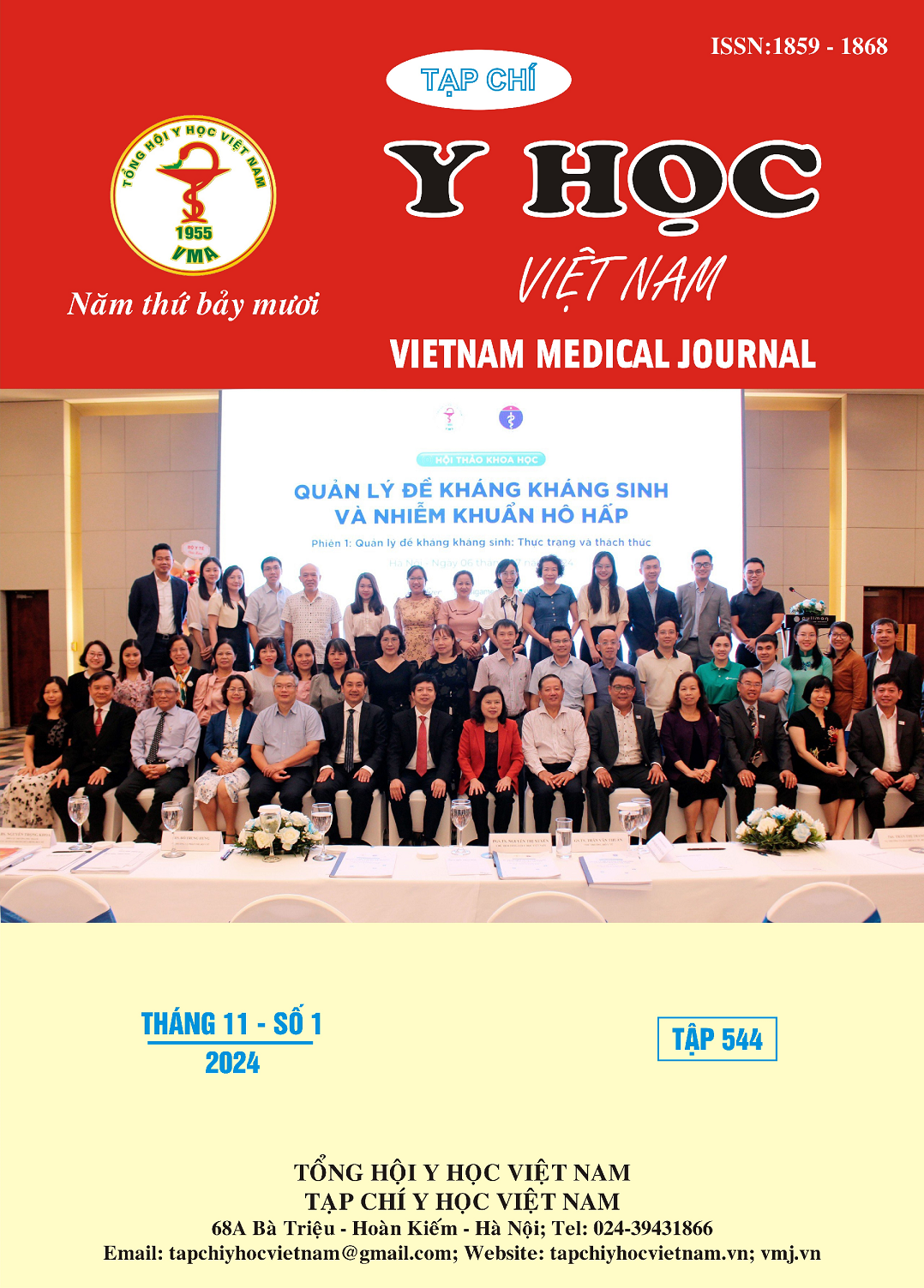EVALUATION OF TREATMENT OUTCOMES FOR NASAL-CHEEK SKIN CANCER USING LOCAL FLAP TECHNIQUE AT CAN THO CANCER HOSPITAL 2021-2023
Main Article Content
Abstract
Background: Treatment of skin cancer in the nasal and cheek areas must meet three requirements: complete removal of the tumor to reduce the risk of recurrence, prevention or management of potential postoperative functional disorders, and optimal aesthetic reconstruction of the defect. The method of local flap reconstruction has become the preferred choice for many surgeons due to its notable advantages. Objective: To evaluate the treatment outcomes of skin cancer in the nasal and cheek areas using local flap techniques at Can Tho Cancer Hospital. Methods: A cross-sectional descriptive and non-controlled clinical intervention study was conducted on 58 patients diagnosed with nasal-cheek skin cancer, who were treated at Can Tho Cancer Hospital from May 2021 to July 2023. Results: The average age of patients was 67.1 ± 13.27 years, with a basal cell carcinoma to squamous cell carcinoma ratio of 48/10. Stages I and II accounted for 91.3% of cases, and lesions ≤ 2 cm were present in 81.0% of patients. The resection margins were 5-10 mm from the tumor edge in 86.2%, with 98.2% achieving complete tumor excision. The size of the defects after tumor removal ranged from 1-4 cm in 89.7% of cases. Postoperative infections within 7 days were recorded at 3.4%. After 6 months of follow-up, there was 1 case of local recurrence (1.7%). All flaps showed good viability, with 98.2% completely covering the defects and matching the surrounding skin color. The thickness and softness density of the flaps were 91.3% and 96.6%, respectively. Aesthetic results post-surgery were rated good in 86.2%, and 96.5% of cases maintained stable organ function.Conclusion: The use of local flaps for defect coverage in the treatment of skin cancer in the nasal and cheek areas is an effective treatment method that meets the expectations of both surgeons and patients.
Article Details
Keywords
Nasal-cheek skin cancer, local flap, aesthetics.
References
2. NCCN (2023), "Basal Cell and Squamous Cell Skin Cancers", [cited May 24, 2023], Available from URL:http://www.nccn.org. DOI: 10.6004/jnccn.2023.0056.
3. Phạm Tuấn Mạnh, Huỳnh Thảo Luật, Phạm Thị Thanh Hoa (2023), “Đánh giá kết quả phẫu thuật ung thư da vùng mũi tại Bệnh viện Ung bướu Thành phố Cần Thơ năm 2021-2023”. Tạp chí Y học Việt Nam, 530(9).
4. Hồ Nguyễn Anh Tuấn, Võ Văn Hải, Cao Nguyễn Hoài Thương, Phạm Đăng Diệu (2021), “Mối tương quan giữa các chỉ số nhân trắc vùng xương mũi trên thi thể người việt trưởng thành”, Tạp chí Y học Việt Nam, 503(1), tr.40-45
5. Trịnh Mạnh Hùng (2016), Nghiên cứu đặc điểm lâm sàng, mô bệnh học và đánh giá kết quả phẫu thuật điều trị ung thư biểu mô tế bào vảy, tế bào đáy của da vùng đầu mặt cổ, Luận văn Tiến sĩ y học. Hà Nội. Tr. 1-41.
6. Ngô Thế Mạnh, Vũ Ngọc Lâm, Lê Đức Tuấn (2022), “Đánh giá đặc điểm lâm sàng tổn khuyết phần mềm vùng mũi được điều trị phẫu thuật bằng các vạt da vùng trán”, Tạp chí Y học Việt Nam, 511(2).
7. Cass ND, Terella AM (2019), “Reconstruction of the Cheek”, Facial Plast Surg Clin N Am, 27(1), pp. 55-66. doi: 10.1016/j.fsc.2018.08.007.
8. Bùi Xuân Trường (2012), Nghiên cứu phẫu thuật cắt rộng - tạo hình điều trị ung thư da vùng mặt, Luận án Tiến sĩ Y học, Đại học Y Dược Thành Phố Hồ Chí Minh.


